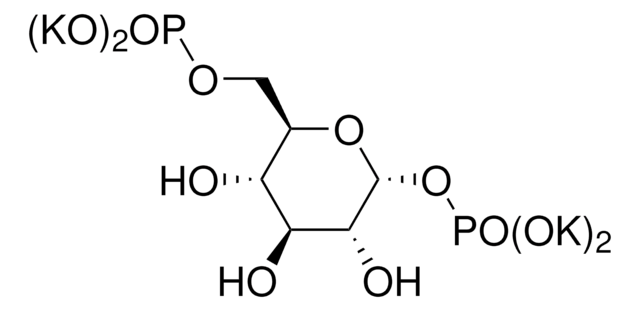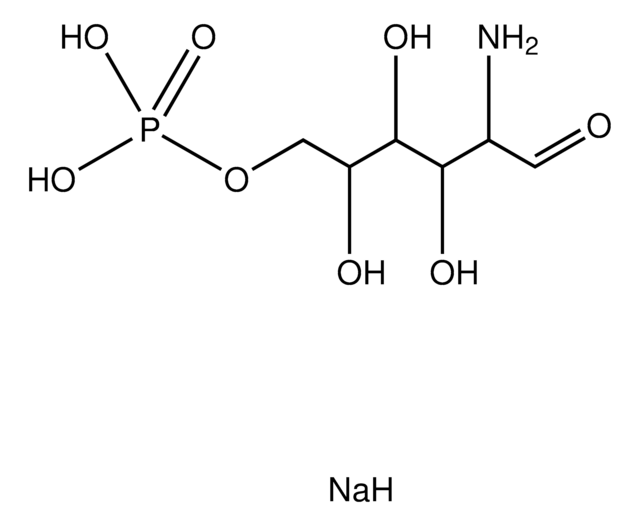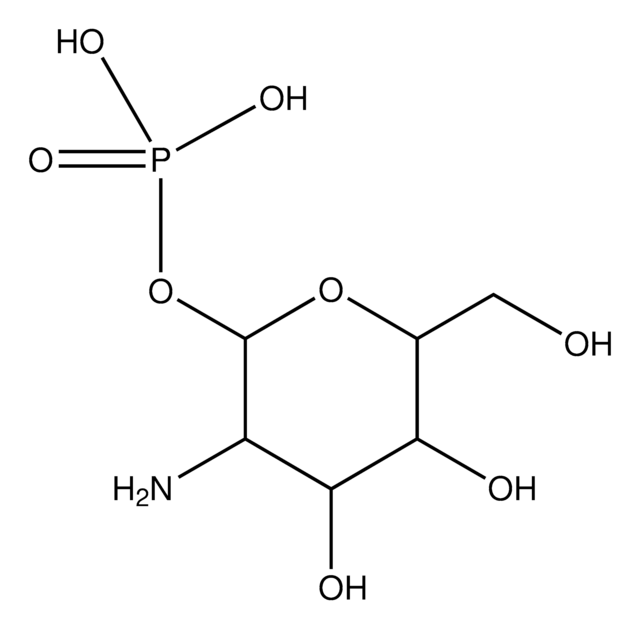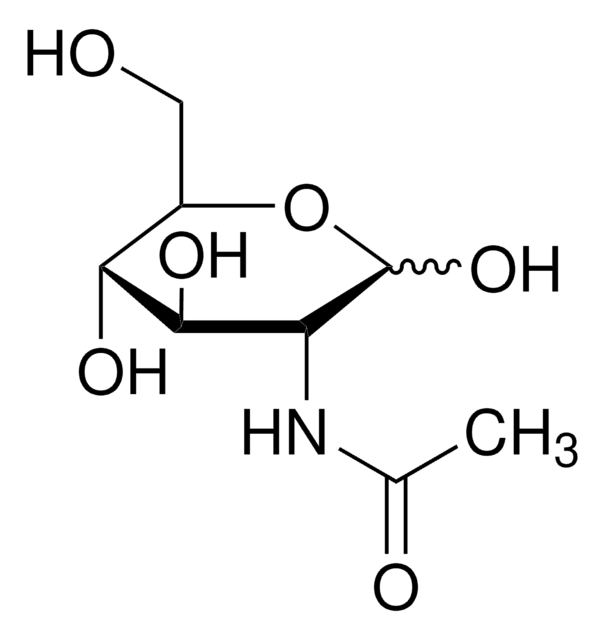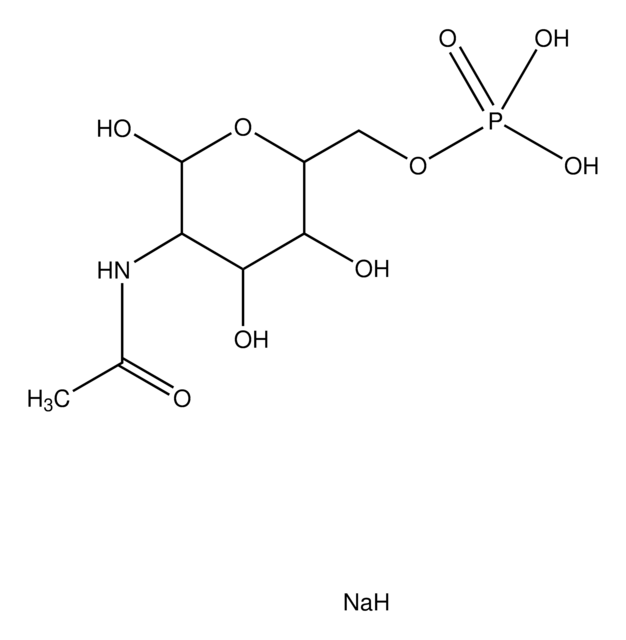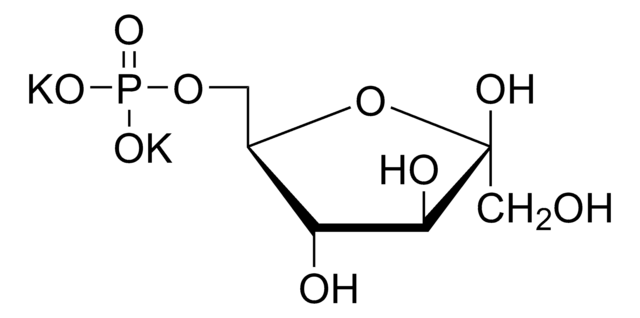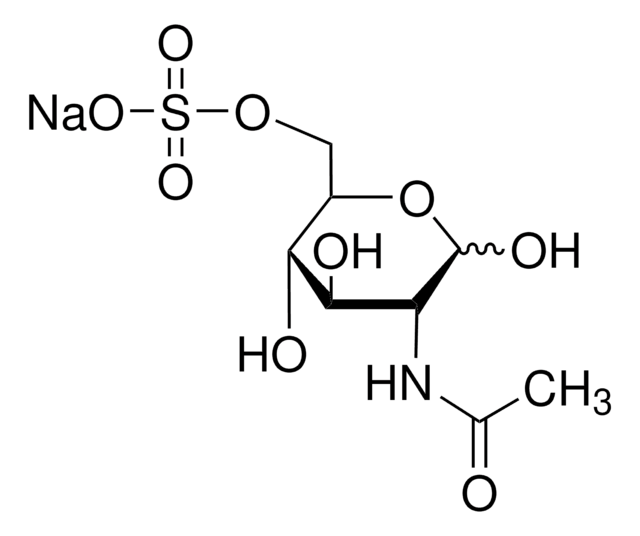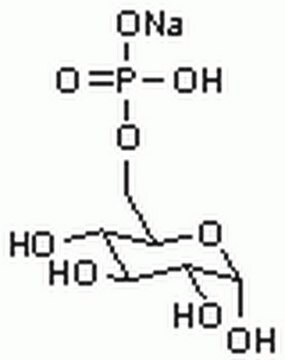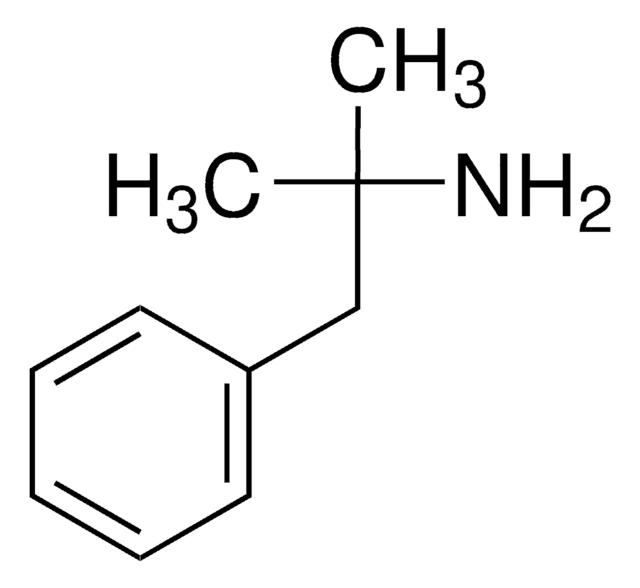G5509
D-Glucosamine 6-phosphate
≥98% (TLC)
Synonym(s):
2-Amino-2-deoxyglucose 6-phosphate
Sign Into View Organizational & Contract Pricing
All Photos(4)
About This Item
Empirical Formula (Hill Notation):
C6H14NO8P
CAS Number:
Molecular Weight:
259.15
MDL number:
UNSPSC Code:
12352201
PubChem Substance ID:
NACRES:
NA.25
Recommended Products
biological source
natural (inorganic)
Quality Level
Assay
≥98% (TLC)
form
powder
technique(s)
thin layer chromatography (TLC): suitable
impurities
≤10% water (Karl Fischer)
color
white
solubility
water: 50 mg/mL, clear to hazy, colorless to almost colorless
storage temp.
−20°C
SMILES string
NC(C=O)C(O)C(O)C(O)COP(O)(O)=O
InChI
1S/C6H14NO8P/c7-3(1-8)5(10)6(11)4(9)2-15-16(12,13)14/h1,3-6,9-11H,2,7H2,(H2,12,13,14)
InChI key
AEJSSXDYDSUOOZ-UHFFFAOYSA-N
General description
D-Glucosamine 6-phosphate, the natural form of glucosamine, is a monosaccharide produced during hexosamine biosynthesis pathway by the enzyme glucosamine-6-phosphate deaminase from the two substrates fructose 6-phosphate and glutamine.
Linkage
Stability is greater than that of the sodium salt.
Other Notes
To gain a comprehensive understanding of our extensive range of Monosaccharides for your research, we encourage you to visit our Carbohydrates Category page.
Storage Class Code
11 - Combustible Solids
WGK
WGK 3
Flash Point(F)
Not applicable
Flash Point(C)
Not applicable
Personal Protective Equipment
dust mask type N95 (US), Eyeshields, Gloves
Choose from one of the most recent versions:
Already Own This Product?
Find documentation for the products that you have recently purchased in the Document Library.
Customers Also Viewed
Stanislav S Terekhov et al.
Science advances, 6(26), eaaz9861-eaaz9861 (2020-07-09)
Microbial communities are self-controlled by repertoires of lethal agents, the antibiotics. In their turn, these antibiotics are regulated by bioscavengers that are selected in the course of evolution. Kinase-mediated phosphorylation represents one of the general strategies for the emergence of
James S Davies et al.
FEBS letters, 593(1), 52-66 (2018-11-10)
N-Acetylglucosamine-6-phosphate deacetylase (NagA) and glucosamine-6-phosphate deaminase (NagB) are branch point enzymes that direct amino sugars into different pathways. For Staphylococcus aureus NagA, analytical ultracentrifugation and small-angle X-ray scattering data demonstrate that it is an asymmetric dimer in solution. Initial rate experiments
Reflections on glycobiology.
S Roseman
The Journal of biological chemistry, 276(45), 41527-41542 (2001-09-13)
Christina E Lünse et al.
ACS chemical biology, 6(7), 675-678 (2011-04-14)
The glmS-riboswitch is unique among riboswitch families as it represents a metabolite-dependent ribozyme that undergoes self-cleavage upon recognition of glucosamin-6-phosphate. The glmS-riboswitch is located in the 5'-untranslated region of bacterial genes involved in cell wall biosynthesis. Therefore, this riboswitch represents
Phillip J McCown et al.
RNA (New York, N.Y.), 17(4), 728-736 (2011-03-04)
Self-cleaving glmS ribozymes selectively bind glucosamine-6-phosphate (GlcN6P) and use this metabolite as a cofactor to promote self-cleavage by internal phosphoester transfer. Representatives of the glmS ribozyme class are found in Gram-positive bacteria where they reside in the 5' untranslated regions
Our team of scientists has experience in all areas of research including Life Science, Material Science, Chemical Synthesis, Chromatography, Analytical and many others.
Contact Technical Service
